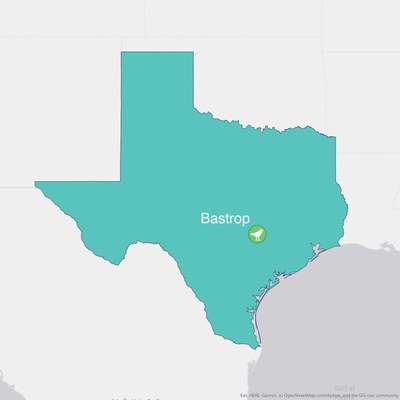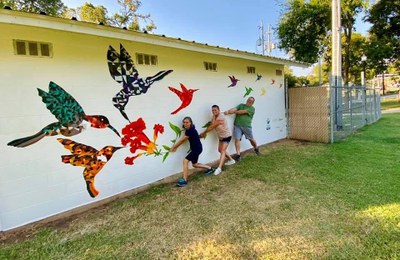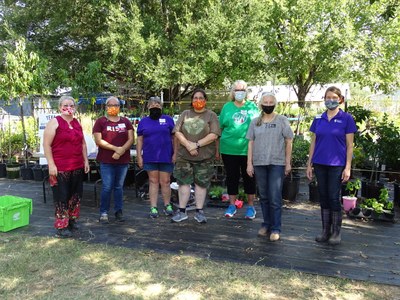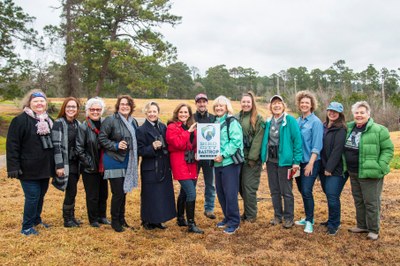Bastrop: Bird City Texas Certified Community
Learn more about the excellent work being done in Bastrop to involve their community, improve habitat, and create safer spaces for birds. Below you will find some details about Bastrop as well as a few examples of the local bird-friendly initiatives they have implemented that led to their Bird City Texas official certification. This list is not exhaustive but hopefully helps give insight on what local communities are doing to support birds and the spaces where they live. We hope these examples help you discover ways your community can work to protect birds and their habitat where you live.
Details
| Population: | 8800 |
|---|---|
| Acres of Parkland: | 384.61 |
| Dates of certification: | 2020-2022 |

Community Engagement
Bastrop did a great job incorporating their local library in their outreach opportunities, hosting both their Dark Sky displays as well as their community science programs. Bastrop was innovative with their partners and plant variety displayed in their Native Plant Sale.
Habitat Enhancement and Protection
Bastrop is in the know when it comes to habitat management! They’ve implemented scientifically-accurate seasonal habitat management, such as not disturbing trees during the nesting season and practicing prescribed burns on appropriate habitats.
Creating Safer Places for Birds
Reducing the threats to birds are not so simple. Sometimes measures are counter-intuitive, such as prohibiting feeding of ducks or removing invasive species of birds. However Bastrop’s community understood the challenge that introduced species and non-native food sources create for wild birds and have implemented appropriate steps to help birds out.
Want to learn more?
Contact Bastrop directly to learn more about what they are doing to protect birds in their community.
Additional Resources
Certification Criteria Commitment
Certified communities make a three-year commitment to accomplish specific projects, host bird-related events, promote local initiatives, pass bird-friendly ordinances, and more in order to achieve certification. These commitments fall into three categories: Community Engagement, Habitat Enhancement and Protection, and Creating Safe Spaces for Birds. Each category has a minimum requirement of actions a certified community must select. In addition to the example listed above, Bastrop has also committed to complete the following actions for each of the three categories.
Category 1: Community Engagement Criteria (5 required)
- Participates in at least one National Audubon Society community science program annually
- Engage in long-term local bird monitoring programs that incorporate eBird and/or iNaturalist
- Displays about dark sky compliant lighting and window modifications that reduce bird strikes
- Create bird watching amenities in public parks
- Host a completely native plant sale and advertise community-wide for the event.
- Park system/museums offer education opportunities that complement Bird City Texas Program
- Speaker/workshop series focusing on birds, wildlife, habitat, environmental stewardship. Min 3/year
- Educate the public about the responsibilities and best practices of providing food and water for birds vs natural habitat
Category 2: Habitat Enhancement and Protection Criteria (8 required)
- Develop and implement bird-centric wildlife management plan(s)
- Acquire and conserve land for birds, wildlife, and native plant communities
- Modify and improve existing habitat for birds, wildlife, and native plant communities
- Preserve dead trees in parks/natural areas to provide foraging and nesting habitat
- Adopt native-only recommended list for all new business and residential developments
- Implement an active invasive plant species removal program on public lands
- Use prescribed fire to benefit birds and native ecosystems
- Implement seasonal management practices that protect nesting birds
- Manage natural areas to encourage wildlife habitat, including “No Mow” areas for native plants
- Conduct inventory of city lands to document plant and animal species and assesses habitat quality
Category 3: Creating Safer Spaces for Birds Criteria (4 required)
- Educational campaign on the impacts of pesticides and herbicides on birds
- Implement strategies to minimize use of pesticides and herbicides on city-managed property
- Reduce light pollution
- Prohibit feeding of ducks on community-managed properties
- Remove invasive or harmful animal species, including some bird species, deer, and/or wild pigs.


